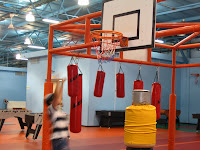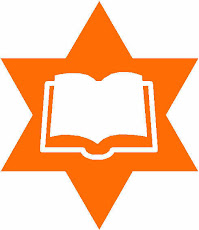“It’s hard to understand the significance of Vayetze without comparing it to a story of similar breadth and importance in our own culture: Gone with the Wind, for instance, or the first episode of 90210. In this parsha, we see the culmination of Abraham’s past with his future, and all his family fights; Vayetze sets the stage for all the future family battles, as well. From here, Jacob’s twelve sons will start resenting Joseph, and fighting, which will cause the entire nation of Israel to move into Egypt and become slaves…But we’re not there yet. For now, think of this as the pilot episode for what is to come.”
Question: What foreshadowing or themes do you see in this chapter?
Rabbi Aaron Pankin of the URJ, refers to the two monuments Jacob builds during this parshah – one at the beginning of the parshah, after his dream; and one at the end of the parshah [in the section we read today] as Jacob begins his journey home.
Rabbi Kerry Olitsky says:On the level of p'shat (the simple, direct meaning), these monuments serve as markers of agreements––first between Jacob and God, and then between Jacob and Laban. On a deeper level, they create timeless memorials to Jacob's vast change and growth.
Jacob builds his first monument (Genesis 28:22) immediately after his famous dream of the ladder connecting earth to heaven, when he notes God's presence in a most unexpected place. Lost and alone, Jacob is the quintessential adolescent: He is alienated from his nuclear family and in search of lasting love, somewhat misunderstood by the world, on an intense personal journey, but not yet fully able to articulate his values and commitments. He still sees the world in the binary dualities of childhood: his land versus a foreign land; heaven versus earth; Jacob versus Esau. His world is black and white, but not yet gray.
And so, Jacob arrives at his second monument in flight once again. This time Jacob's pursuer catches him, and Jacob is ready to stand up to him. This time, instead of mismanaging his human relationships and making an agreement solely with God,
Jacob reaches an agreement with Laban. This second monument represents the newly adult Jacob, who, in a more spotted, more speckled, far-grayer way, is able to maturely and honestly coexist with those around him, despite their differing ideals and desires. Jacob shows us that God is in that place, too. But this time, he knows it as an adult and gives us a powerful model for the mediation of competing ideals and desires in our own adult religious lives.
Social psychologist and researcher Bethamie Horowitz has taught us through her work that Jewish identities are not static. Rather, like Jacob, our identities are reflective of our journeys. They continue to evolve throughout our lives. And the shortcoming of research is that it usually only gives us a snapshot of the population under study at any one moment in time. As a result, it is difficult to draw conclusions for the future from them.Question: How do we see Jacob's behavior/identity evolve during this parshah?
Rabbi Brad Artson, of the American Jewish University, asks:
How, despite the difficulties and the disappointments [of his life in Haran], did [Jacob] manage to keep on keeping on?
For Jacob that question became especially poignant as he left the home of his father in law, Laban. Having worked for fourteen years for his two wives, Leah and Rachel, and another six years for a share in Laban’s flocks of sheep, Jacob sees twenty years living in a foreign land, away from his cherished Israel, and away from his family and his childhood haunts. Only after the fact could Jacob allow himself to see the enormity of his struggle and the extent of his own inner exile and transformation.
In Chapter 31:42, Jacob responds to Laban’s statement that everything Jacob took with him was due to Laban’s generosity. "Had not the God of my father, the God of Abraham and the Fear of Isaac, been with you, you would have sent me away empty-handed. But God took notice of my plight and the toil of my hands, and He gave judgement last night." (Etz Hayim translation)
The phrase, “had not the God of my father…” coming at the beginning of the sentence is an unusual grammatical construct. Rabbi Artson quotes three understandings of the phrase which help answer the question, How did Jacob manage to keep on keeping on?
Or, as Esther D. Kustanowitz at G-dcast sums it up: "As Jacob learned: sometimes you have to leave home to find it."Ancestral merit is an awareness of being connected to those who preceded us. It is found in cherishing our traditions by living them in our daily lives and by transmitting them to our children and to their children. It is a sense of identity that involves the continuing stream of Jewish people, starting with Abraham and Sarah, continuing through ourselves, and extending to each new generation of Jews. The goodness of his ancestors gave him his sense of purpose, his vision of what could be, and the ability to work toward that distant goal.
Kiddush ha-Shem, the sanctification of God, is an awareness of spirituality and the importance of making God’s presence and love a pervasive part of our consciousness and our lives. Through prayer, contemplation, song, dance, meditation, and study, we sanctify God by focusing our minds, hearts, and souls on our sacred source. Acting in a way that reflects positively on God, motivated our patriarch to live up to his ideals, to walk in God’s ways even during times of sorrow, want, and fear.
Faith and Torah translate into a devotion to the mitzvot, the 613 commandments of the Torah as understood, amplified, and defined through rabbinic interpretation (drashot) and legislation (takkanot). By regularly acting out the deep wisdom of Jewish values through concrete actions, Judaism provides a pedagogy of hands and feet, a spirituality of pots and pans, a sense of fidelity to God that extends to every aspect of our lives. Jacob was inspired by his sense of God’s presence in his life, the pervasive holiness made concrete through the mitzvot, the sacred commandments that link the Jew and God.
On those three legs, ancestral merit, sanctification of God, Torah and mitzvot, Jewish life is assured and our Jewish lives are enriched. Holiness, wisdom, and belonging are within our grasp, able to sustain and to nurture us through life’s trials, even as they did for our patriarch, Jacob.
I guess it wasn't such a "dull" section of the parshah, after all!


























